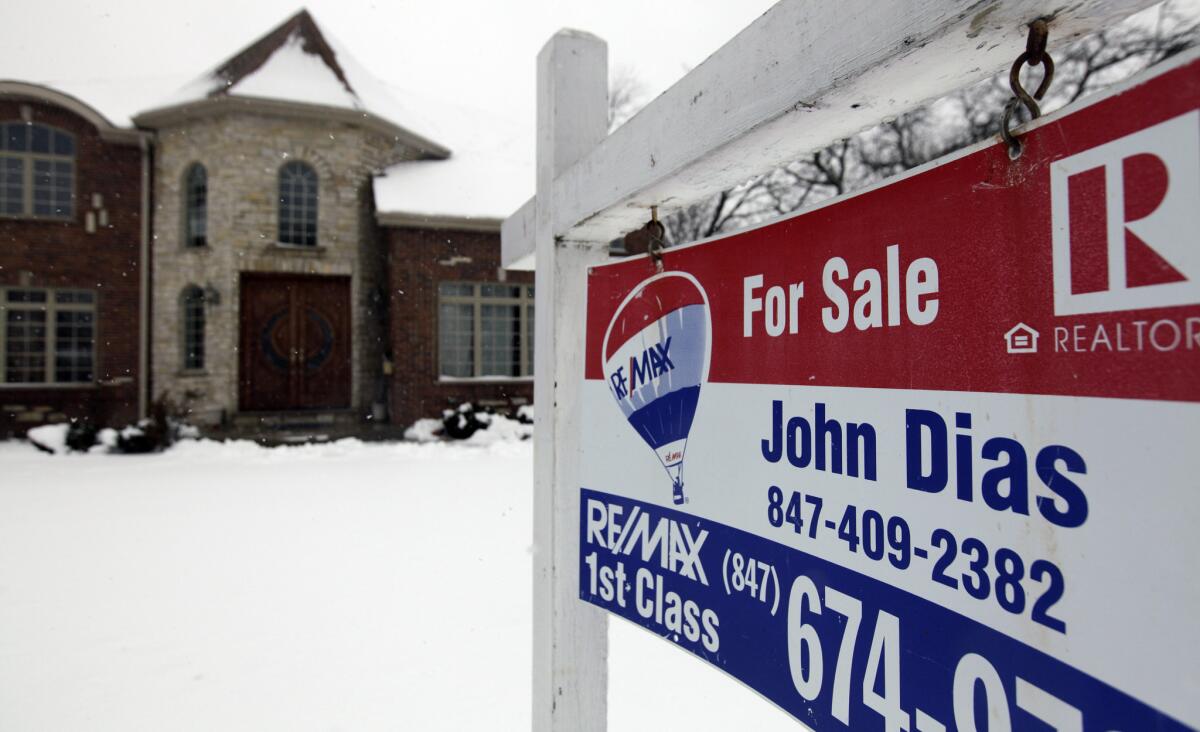When the government backs mortgages

- Share via
How should we reform our broken housing finance system? To what extent should the federal government continue to provide guarantees for mortgage financing, such as the ones it provides for Fannie Mae and Freddie Mac? With Fannie and Freddie in a federal conservator ship that has already cost taxpayers more than $140 billion, it’s politically popular to suggest that the answer is “not much.”
But policymakers should be wary of that consensus. Historically, government-backed mortgages are closely linked with stability in housing finance, an inoculation against the otherwise chronic cycle of boom and bust.
Federal guarantees have been a part of the U.S. housing finance system since the New Deal. Before then, mortgage markets were extremely unstable, experiencing a financial crisis every decade or so. This constant volatility was a major barrier to economic growth and the development of U.S. capital markets.
The problems in pre-New Deal private housing finance culminated in the banking crises of the early 1930s, in which roughly half of all banks failed, triggering the Depression. Policymakers at the time responded by broadly introducing federal guarantees into mortgage finance, administered through newly created institutions and programs including the Federal Housing Administration and federal deposit insurance. Several decades later, federal guarantees were introduced for the mortgage-backed securities issued by the government-sponsored enterprises Fannie Mae and Freddie Mac.
Beginning in the 1940s and continuing until the early 2000s, such federal guarantees existed for roughly 70% of all housing finance in this country. Importantly, the onset of these guarantees coincided with an unprecedented period of financial stability. From the 1940s until the 2000s, unlike in any other period in our nation’s history, the U.S. did not experience a major systemic financial crisis. (The savings and loan debacle in the early 1990s was not a financial crisis, nor was it systemwide.)
But by the early 2000s, the share of mortgages financed by federally guaranteed sources of funds experienced a steep and sudden decline as Wall Street’s securitization of mortgages grew at a stunning rate, from 12% of the market in 2003 to nearly 40% of all mortgages originated in 2005 and 2006. The sharp increase in home prices that constituted the housing bubble was almost exactly contemporaneous. Of course, the bursting of the housing bubble led to the 2008 financial crisis. In short, it was only when government guarantees declined precipitously that we saw a return of the financial instability that had been absent since the 1930s.
So why the close historical correlation between government guarantees and housing finance stability? One important factor may be the role of government guarantees in promoting affordable and consumer-friendly home loans, specifically the 30-year fixed-rate mortgage that we take for granted today.
In the 1930s, the typical home loan favored the lender: It was an expensive, short-duration, interest-only affair that required refinancing every few years. It took government guarantees (and the accompanying regulation) to direct capital toward the 30-year fixed-rate mortgage, which carries more risk to the lender and less to the borrower.
Indeed, it is clear that in the absence of government guarantees, mortgage finance naturally gravitates toward “rollover” loans. During the 2000s mortgage boom, Wall Street’s unguaranteed mortgage securitization pipeline strongly emphasized (and paid handsome incentives to lenders to originate) loans that were relatively high-cost, adjustable-rate, interest-only, and designed to be refinanced every few years.
From 2001 to 2008, only 30% of the loans financed by Wall Street securitization were traditional 30-year fixed-rate mortgages, compared to 88% of loans financed by Fannie and Freddie securitization. Interest-only rollover loans are also the industry standard in commercial real estate finance, which does not enjoy government guarantees.
Not surprisingly, these loans default at extraordinarily high rates during periods of distress. In the Depression, rollover loans experienced a delinquency rate of about 50%. In the recent recession, the delinquency rate was 29.8%, roughly six times greater than the rate for 30-year fixed-rate mortgages.
In short, government guarantees appear to be crucial for promoting housing finance stability, in part because they promote loans that default at far lower rates than those originated by private capital in the absence of such guarantees. Policymakers interested in financial stability should consider these facts carefully as they consider how best to reform our broken housing finance system. If the federal government’s footprint in housing finance grows too faint, it may once again mean disaster for borrowers, lenders, investors and the economy writ large.
David Min is a law professor at UC Irvine. His paper, “How Government Guarantees in Housing Finance Promote Stability,” will be published in an upcoming edition of the Harvard Journal on Legislation.
More to Read
A cure for the common opinion
Get thought-provoking perspectives with our weekly newsletter.
You may occasionally receive promotional content from the Los Angeles Times.








